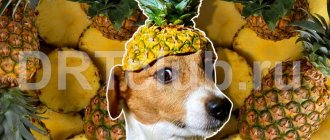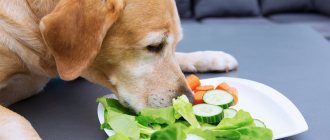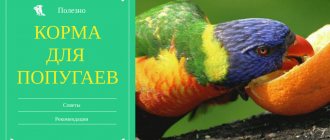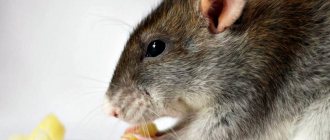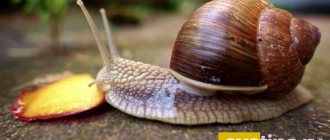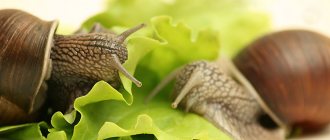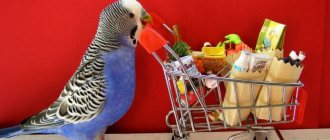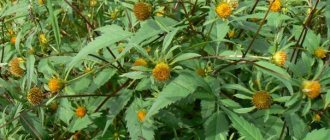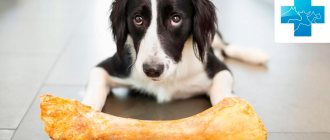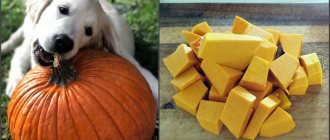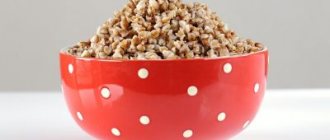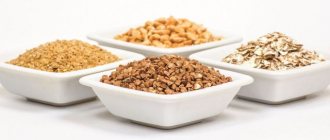Budgerigars are the leaders in the number of households. When a pet appears in a home, it brings a lot of joy and pleasure to its owners. And as a sign of gratitude, the owner surrounds the parrot with care, attention and affection, pampering the pet with all kinds of delicacies. Pays considerable attention to nutrition, which, in addition to everything else, plays an important role in the life of a bird.
The pet is not picky about food. In addition to grain mixtures, his menu should be diluted with fruits and vegetables. Fruits and roots contain a huge amount of essential vitamins and minerals that are involved in the development, growth and health of birds.
Grain mixtures
The most important part of a budgie's diet is cereal seeds. The seeds are very nutritious and contain sufficient calories. It is important that the birds eat the seeds of various cereal plants.
A basic grain mixture for feeding birds can be made up of 40% canary seed, 20% millet, 20% French millet and 20% oats.
Canary seed is the seed of the canary plant. This is a very good food for budgies; the grain mixture can contain up to 40%.
Millet is also a very popular food for parrots. It can be up to 50% in the grain mixture. Moreover, millet can be of different varieties - yellow, white, red. For budgies, it is best to take red millet, as it contains a lot of carotene - provitamin A.
Oats are another essential and nutritious food. It contains a large amount of protein. In winter, budgies are given more oats than in the summer months. Instead of oats, you can give peeled oats - oatmeal; it is well suited for feeding sick birds.
A good grain mixture should be clean, free of impurities, the grain in it should be shiny and have a pleasant smell. If the mixture has a musty smell, it is not suitable as feed.
You can make the grain mixture yourself, or you can purchase it at a specialty store. Such mixtures are formulated in accordance with the nutritional needs of birds and are well balanced.
The vegetable diet consists of
Vegetables and herbs are natural sources of large amounts of vitamins, minerals, microelements, and fiber. However, not all foods that are suitable for humans can be eaten by birds.
In addition, each individual product does not contain a sufficient amount of substances necessary for the proper functioning of the body. Therefore, it is important to combine vegetables, making your diet more varied. When purchasing a budgerigar, you should study the information about their menu in advance so as not to provoke a disorder or developmental delay.
It is important not just to feed your bird vegetables, but to offer it properly prepared treats. In order for your pet to happily eat everything that is given to him, he should be accustomed to the food from the first days after purchase. With age, budgies become conservative and eat only familiar foods.
Before feeding your pet, wash the product thoroughly. For greater convenience, vegetables are chopped or grated. You should not treat your pet if you have doubts about the quality of the food.
Cabbage
White cabbage is a source of fiber, vitamins B, C, and microelements. Considering the sensitivity of birds to coarse fibers, it is advisable to feed cabbage after a short scalding with boiling water.
Leaves treated in this way become softer and better digestible. Parrots of all types love to chew on raw stalks. It can be grated or cut into flat pieces.
Carrot
All birds love sweet, tasty carrots. They enjoy eating it in the form of juicy slices, grated, or in combination with eggs or cottage cheese. This product is considered mandatory, so you don’t have to think about whether a parrot can have carrots.
It has a positive effect on the functioning of the cardiovascular system, accelerates cell regeneration, and improves appearance. Due to the high content of vitamins A, C, and group B, it has a positive effect on cellular metabolic processes. Carrots also contain iron, calcium and potassium.
Pumpkin
Like other representatives of melon crops, pumpkin is a storehouse of useful substances. You can offer your budgie a vegetable in the form of slices or a gruel of grated pulp. With great pleasure, the birds drink pumpkin juice and eat its seeds.
The benefits of this product are invaluable. The composition contains vitamins A, D, E, K, trace elements and minerals. It is also a storehouse of fiber. For variety, you can treat your parrot to a dish of baked pieces.
Cucumber
The structure of the cucumber is such that it contains a large amount of water. Homemade vegetables contain a lot of vitamin B, C, provitamin A and valuable minerals. Unlike humans, birds prefer overripe specimens with seeds.
In addition, eating this vegetable has a positive effect on the condition of feathers. This is explained by the presence of vitamin E in the composition. The only thing to remember is that fruits often contain a lot of nitrates. Therefore, before giving your parrot a cucumber bought in a store, you need to briefly place it in water.
Tomato
It is recommended to give peeled tomato pulp to chicks and growing young animals. Birds also love to feast on their seeds. The benefit of the vegetable is its high content of carotene, vitamins C, group B, A, K.
Among the elements, a high content of cobalt, silicon, chromium, molybdenum, and manganese can be distinguished. The listed substances will help the growing body gain strength faster. Unripe or green tomatoes are not recommended for budgies.
Zucchini
This type of melon crop is considered dietary and is very popular with feathered pets. They love it for its high carbohydrate content, tender flesh and pleasant taste.
Even though grated zucchini is easier to eat, birds love to chew zucchini cut into sticks. Its pulp contains a huge amount of silicon, cobalt, and manganese. It is also rich in potassium, vitamins B, C, K, and fiber.
Bulgarian perey
It is rare to find birds that do not eat sweet bell peppers. They love to chew its juicy pulp and seeds. This wonderful vegetable contains more vitamin C than the healthiest fruits. It also includes a wide range of trace elements, minerals, acids and sugars.
It is best for chicks to eat thick-walled peppers cut into thin strips. They bite off small pieces and carefully grind it with their beak.
Legumes
Parrots love to eat legumes of all kinds. They are given fresh beans, peas, and lentils at the stage of waxy ripeness. After the end of the season, the dry grains are washed well, soaked, and after the sprouts appear, they are treated to pets. This type of food should not be included in the diet more than 1-2 times a week.
With constant use, in their raw form, they are difficult to digest and also slow down metabolism. In the cooking field, beans, soybeans, chickpeas are fed without fear.
Broccoli
It is better to give broccoli to budgies after treating them with boiling water. This will help soften hard fibers and remove some of the harmful substances and nitrates. Being a valuable dietary product, broccoli will help improve digestion, fill your pet’s body with useful substances, and normalize the functioning of internal organs.
Birds also love the delicate texture of cauliflower, which is a type of broccoli. Most of all they like boiled vegetables.
Corn
Given the capricious nature of adult budgies, it is worth accustoming them to corn in early childhood. Most of all they love small cobs. This product improves well-being, increases the body's resistance, and fills you with energy. It contains a lot of protein, B vitamins, and ascorbic acid.
You can also include corn frozen for the winter in your diet. Feathered friends will like it best in the stage of milky ripeness. You can use it immediately after defrosting. Chicks are less loyal to the canned variety, and do not eat dry food at all.
Patissons
Young ovaries are considered the most valuable for the parrot menu. Their pulp is as digestible as possible, and its rich composition fills the body with not only vitamins and minerals. Squash contains a small amount of enzymes. They are also 9% water.
Giving squash along with legumes can improve the absorption of proteins. In addition, the vegetable helps maintain an alkaline blood reaction. It is given to birds, cut into strips.
Despite the peculiar taste of turnips, most species of parrots eat it with pleasure in the winter. The root vegetable has a less rich composition than other vegetables, but its pulp contains a lot of calcium, vitamin A, C, and group B.
Once in the body, it exerts its effect by strengthening the musculoskeletal system. This plant is especially loved by cockatiels and lovebirds.
Lettuce leaves
As the weather warms up, you can give your budgie lettuce leaves. They are a valuable source of folic acid, nutrients, structured water and fiber. The most valuable among the existing varieties is considered to be lettuce, a rich green color.
It is important to remember that in winter, store-bought products contain a high percentage of nitrates, so it is better to grow it on a windowsill or wait until spring.
What to feed budgies
Ready grain mixture
Modern specialized stores have an impressive selection of ready-made mixtures. Choose one that says “food for budgies.” With the ready-made mixture, you do not need to worry about balancing your diet, because... the manufacturer did it for you. Ready-made foods contain all the necessary ingredients and vitamins, and some even have pieces of fruit added.
An example of a popular grain mixture is RIO food for budgies. It contains different varieties of millet, canary seed, flax seed, oats, wheat, hemp seed, Abyssinian nougat, calcium gluconate and algae.
You can also purchase Prestige food for budgies. Which is in demand among lovers of feathered pets. This food contains yellow, white and red millet, shelled oats, canary seed, flaxseed, oil noug, safflower.
These grain mixtures provide budgies with the necessary amount of proteins, carbohydrates and fats, as well as the necessary minerals.
Combined grain mixture
Compiling the mixture yourself is a responsible undertaking. Pay attention to the quality of the grain, do not buy from unverified places. High-quality grain is shiny and free of damage or mold. The grain mixture should be based on more than half millet or canary seed. Dilute the remaining portion with oats, flax, sunflower seeds or hemp seeds. Compound feed must contain at least three types of grain.
Porridge for parrots
If you are wondering what to feed your budgie if you run out of food, then the answer is porridge. If there is no food, cook buckwheat, oatmeal, pea, rice or wheat porridge for the parrot. Boil the porridge in water without sugar and salt, or simply steam it. Porridge also dilutes the diet.
Video What to feed a budgie. Feeding a budgerigar. How to feed a budgie
What to do if your parrot refuses fruit
Some birds (usually older ones), accustomed to the same food, do not want to try new foods. In this case, you can try to change their attitude.
First, you should try changing the shape and presentation of the fruit or vegetable. For example, instead of small pieces, offer large ones. Or rub the product and add a small amount to your usual food. Alternatively, try squeezing juice or pureeing it and let your parrot taste the results.
Another way is to turn the feeding process into a game: place pieces of food in different places in the cage, attaching them to the pet’s toys. Or put several pieces of fruit on a skewer so that your pet will have to try to remove them.
Some pets are inquisitive and prone to imitation. Therefore, if the owner sits next to the cage and starts eating something with appetite, the parrot may show interest in the unfamiliar object. If a bird trusts its owner, it will not doubt for long the safety of the food it is offered.
Green feed
It must be remembered that it is not enough to give birds only grain mixtures; their diet should be supplemented with other ingredients. For example, green food. Fresh greens contain many vitamins, so they are very healthy.
What do budgies like? Birds really like to eat young tree branches; they happily eat buds, bark, and wood. In addition, parrots willingly eat leaves of vegetable plants, the so-called “tops” - young leaves of carrots, radishes, and lettuce. In summer there is no shortage of leaves and herbs. To know what grass budgies eat, you need to carefully read and memorize the list below.
In the summer you can pick the following plants: dandelion, clover, chickweed, bluegrass, fireweed, shepherd's purse, wheatgrass, plantain, nasturtium, timothy, strawberry leaves. Plants should be plucked away from roads and busy highways, and pets should be avoided. It is best to collect plants outside the city limits.
But it should be remembered that not all plants are useful for parrots, and some are even dangerous. Fans of feathered pets should remember well what is prohibited for budgies.
Some indoor plants are very dangerous for these birds; parrots can become poisoned if they eat them. Among these plants are amaryllis, hyacinth, azalea, hydrangea, periwinkle, dieffenbachia, cocoa tree, caladium, jasmine, narcissus, cana, bracken fern, nightshade, colocasia, poinsettia, crocus, laurel, ranunculaceae, oleander, ivy, philodendron, aeonium and etc.
Poisonous flowers: tulip, narcissus, poppy, peony, etc. Poisonous wild plants: buckthorn, white acacia, oak, burdock, juniper, horse chestnut, elderberry, etc.
Twig food is perfect for vitamin feeding in winter. Tree branches also help clean the parrot's beak.
The following branches are excellent for branch food: - Birch, - Linden, - Currant, - Cherry, - Apple, - Raspberry.
Among the trees there are also poisonous for small pets: lilac, bird cherry, coniferous trees, pear.
Tree branches - how to give?
If you have already had parrots, you probably know how much they love to “chew” everything. Therefore, it is worth placing branches of fruit trees in the cage. They will be both a toy and food.
Choose trees away from roads and industrial areas. Inspect the branches for resin.
After pruning, the branches are soaked in water for 4 hours, washed and doused with boiling water. Which plant branches can be given to a parrot?
- apple trees,
- birch trees
- and you,
- rowan,
- viburnum,
- sea buckthorn,
- hazel.
You can also trim currant and raspberry bushes.
What fruits and vegetables can be given to budgies?
The diet of feathered pets must be replenished with fruits and vegetables. Fruits are rich in vitamins, organic acids, microelements, sugars and are very useful for parrots; in addition, fruits and berries are a favorite treat for budgies.
Parrots love fruits very much, this is their favorite treat, but they need to be given in small quantities. You can add dried apricot (dried apricots), a little peeled pineapple, a small piece of an orange or tangerine slice, ripe seeded watermelon pulp, a piece of peeled grapefruit slice, a peeled banana slice, a seeded piece of pear or apple, strawberries, to your bird menu. gooseberries, raspberries, currants, peeled kiwi slice.
Not all fruits are beneficial; there are also dangerous ones: persimmons, avocados, papaya (not dangerous in dry form), nuts.
From vegetables, parrots can be offered pieces of broccoli, kohlrabi, turnips, peppers, pumpkin, beets, carrots, unripe cucumbers (two- to ten-day ovaries), ripe tomatoes, lettuce, spinach.
Do not give: onions, garlic, eggplant, potatoes and all greens that contain essential oils.
Supplements Along with what the budgerigar eats during the day, mineral stone and sepia are used as an additional source of vitamins and calcium. Vitamins will prevent you from getting sick, and sepia will keep your pet’s beak healthy.
Video What to feed a budgie
Mineral supplements
The key to feeding a parrot is mineral supplements. For example, birds will benefit from feed chalk saturated with calcium. You need to buy special chalk for birds, because chalk intended for rodents can harm the health of the parrot. Other sources of minerals:
- Combined mixtures. Those sold in pet stores contain a 70:30 ratio of shell rock to chalk. Manufacturers often add small amounts of eggshells and charcoal to them.
- Stones. They come with iodine, iron, zinc, magnesium and calcium. These elements are responsible for the health of the skeleton and endocrine glands.
- Sepia (cuttlefish shell). Rich in Na, K, Mg, P, which protect the beak from deformation. Give preference to sepia white with a slight yellow tint.
- Organic sand. Consists of crushed shells. Promotes grinding of food in the crop.
- Chicken egg shell. Due to the potassium content, it strengthens the skeleton and creates a protective layer of the shell when laying eggs.
- Birch charcoal. A storehouse of calcium and iron. It will be a means of detoxification for the pet.
Large whole minerals are attached to the bars of the cage, and the mixture is poured into a plate.
What to feed birds when hatching chicks
As a rule, the female feeds the small chicks with special milk, which is formed in her stomach and crop. During this period, sprouted grains should be added to her diet, which promotes the formation of “milk.” When the chicks grow a little, the female gives the chicks softened grain. After the chicks leave the nest, the male feeds the chicks. The birds themselves know what to feed the budgerigar chicks; this is inherent in them by nature and they usually cope well with this task.
Other
You can supplement the menu of your favorite pets with wheat, millet, and oats. If the question arises about whether it is possible to give a parrot a watermelon, then it is preferable to give one grown in a local melon at the end of summer. Parrots also love Chinese cabbage. It is not recommended to give celery.
The digestive system of parrots easily copes with the digestion of grains, young bark, herbs, and vegetables. By introducing foods that are allowed for them into the diet, the owner ensures good health and excellent mood.
Next
NutritionHow long can a parrot live without food and water?
Water for parrots
Eating budgerigars at home will not be optimal without water. It doesn't have to end. Do not add water, but change it every day! The drink should be at room temperature so that the bird does not catch a cold. Water should not be boiled, filtered, or filled with carbonated water. If you are not sure about the quality of your water, then buy regular drinking water in the supermarket. In winter, add 2 drops of lemon juice to the drinker to support immunity. In addition to water, parrots are pampered with freshly squeezed juices. Juices from a package are not suitable due to the sugar content.
What should not be in the diet of birds: list of prohibited foods
You cannot mindlessly feed a bird food from the human table. It is contraindicated to give your feathered friend smoked, fried, canned or confectionery products, coffee, alcohol, chocolate, and mushrooms. Do not expose poultry food to microwave radiation, salt it, or add sugar to it. Before introducing a new food, you should always ask yourself: “Is there anything similar in the diet of wild parrots?” If you are not sure of this, it is better not to experiment with your pet’s health.
What should be in a parrot's diet
Methods for solving the problem
The most difficult thing is to teach wavy animals to eat fruits. If a budgie does not eat fruit for a long time, it is recommended to enrich its diet with vitamin complexes or a grain vitamin mixture. Larger bird species eagerly eat all fresh and dried fruits offered.
The demonstration method works well when the owner shows visually and emotionally that the food is very tasty. You can put a piece of pear on the cage or between the bars and pretend that it is very tasty. The owner's affectionate voice and demonstration of eating often encourages the bird to come up and try. Until the parrot learns to eat on its own, its diet should be enriched with vitamin complexes. Among these, a liquid composition added to the drinker has a good effect. Care and patience are all that is necessary for a bird to learn to eat fruits.
Source
Prohibited
Despite the wide range of exotic fruits permitted for use, some are strictly prohibited. These include:
This is explained not only by the fact that they come to our country after ripening on the way. Their juice contains harmful alkaloids, glycosides, and papain, which can cause poisoning to the parrot. For example, mango fruit contains essential oils and tannins, which can negatively affect the well-being and health of the bird.
Persimmons are also rich in tannins, and avocados contain the cardiac glycoside persin, which can cause cardiac arrest.
“Fruit” prohibitions include treating frozen and cold fruits and various preserves. Candied fruits are also contraindicated for parrots.
Symptoms
If your feathered friend refuses to accept fruit treats, then you should take a closer look at the accompanying symptoms:
When a parrot does not want to eat the fruits offered, but at the same time its activity is high - it flies well, chirps, and leads its usual lifestyle, then you should not worry too much. You need to be patient and persistent and continue to offer apples, pears, bananas, and tangerines. If accompanying symptoms occur, you should take a closer look at the appearance; perhaps the pet has become infected with parasites that prevent it from eating, and the swallowing process causes pain. If you cannot determine the disease on your own, you should consult a veterinarian.
Can birds eat clay?
Budgerigars should always be provided with enough clay for their needs, as clay absorbs all toxins and removes them from the body. Despite the high level of development of medicine, the role of clay in metabolism has not yet been established.
Budgerigars living outside the wild and experiencing a clay deficiency may subsequently produce offspring suffering from rickets. There are a large number of assumptions about why birds in the wild try to extract clay for themselves in their favorite ways, so it is better to take this as a given, which is beyond doubt.
There is a myth that is very common among bird owners that fruit seeds are a source of toxic effects on the bird’s body. The seeds contain a huge amount of fat and protein, which is already an ideal platform for the development and reproduction of mold fungi. Therefore, first of all, you need to adhere to the rules for storing such products. They should be stored in a dry, cool and dark place.
Before giving the seeds to parrots, you should break a few grains to make sure that the product has not spoiled. Every summer you should make supplies for the winter; you do not need to store such a product for more than 12 months.
